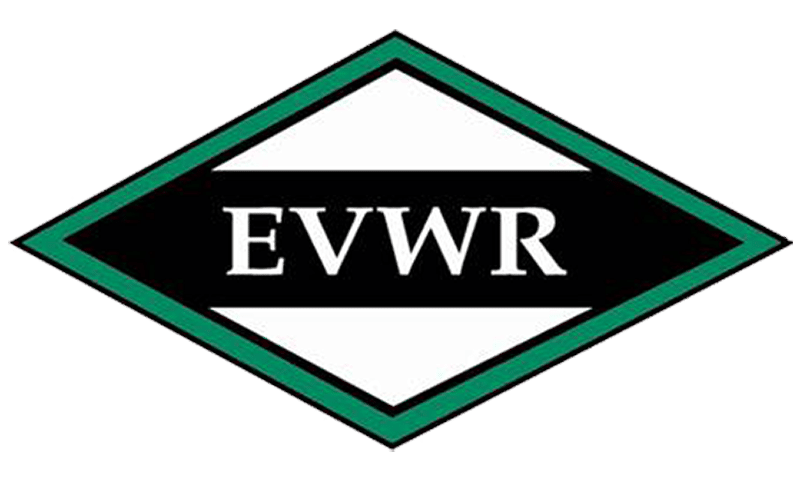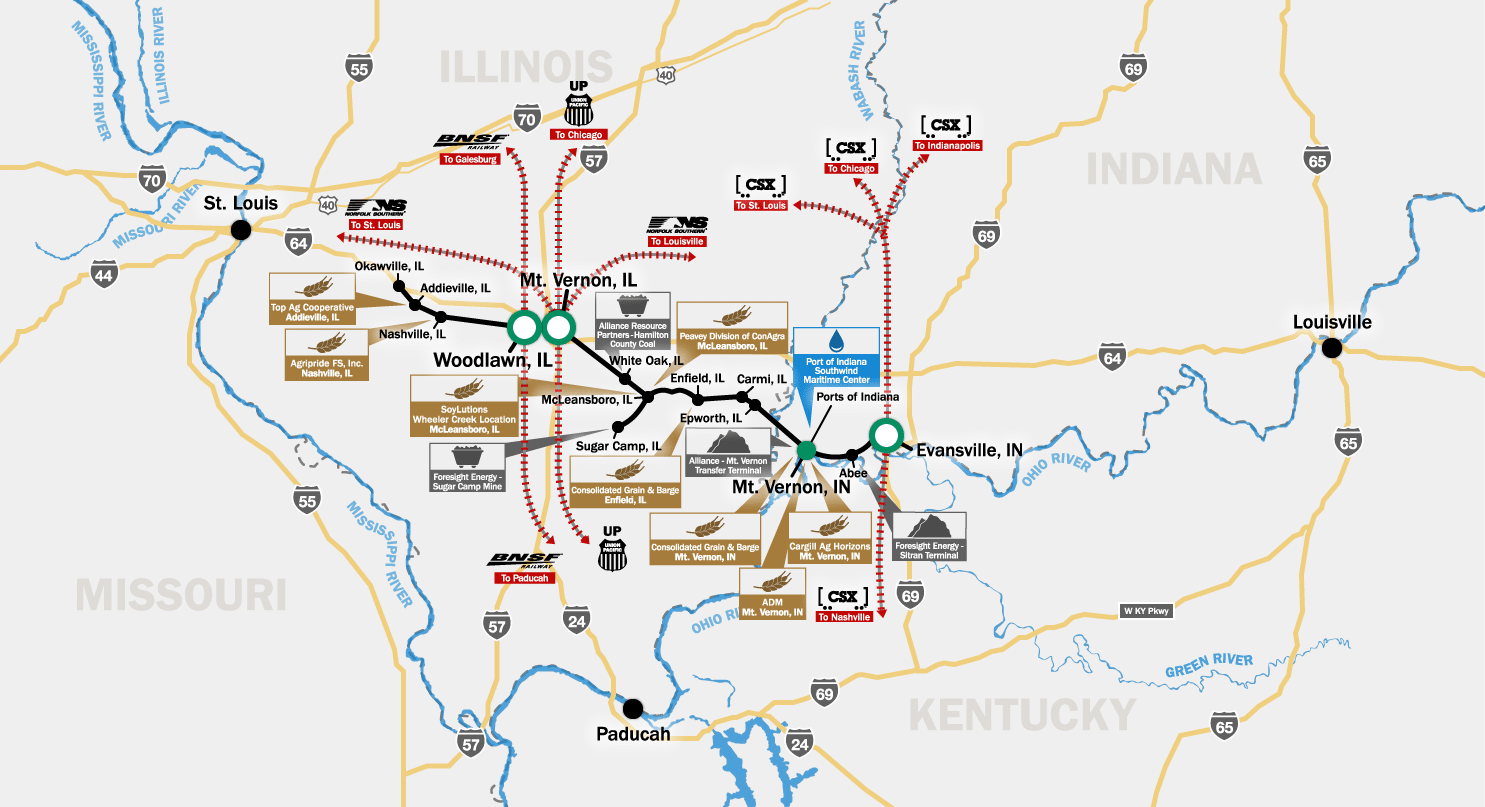OUR COMPANY
ABOUT US
Company Profile
The EVWR is strategically located in the heart of the nation’s highway and inland waterway system, with a rail-barge transfer facility on the Ohio River at the Port of Mt. Vernon, IN. Our railroad connects with the UP and NS at Mt. Vernon, IL; with the BNSF at Woodlawn, IL; and with the CSXT at its Howell Yard in Evansville, IN. We serve over 30 on-line customers and handle a variety of commodities including coal, grain and food products, chemicals and fertilizer, lumber and other building materials.
The EVWR is a privately held corporation and subsidiary of P&L Transportation, Inc., a Delaware Corporation.
Transparency in Coverage – Anthem
This link leads to machine-readable files that are made available in response to the federal Transparency in Coverage Rule and includes negotiated service rates and out-of-network allowed amounts between health plans and healthcare providers. The machine-readable files are formatted to allow researchers, regulators, and application developers to more easily access and analyze date.
Current Career Opportunities
Careers
The EVWR accepts online applications and resumes. All applications and resumes are retained on file for one year.
Please state your area of interest (or department) in your cover letter.
By Mail Resumes
Evansville Western Railway, Inc.
200 Clark Street
Paducah, KY 42003
FAX: 270-444-4364
Online
Online Resumes and cover letters may also be submitted by email to hr@evwr.com.
FAQ
How do I contact the Railroad Retirement Board?
Phone: 877-772-5772
Or check out their website at https://rrb.gov/
How can I buy railroad ties?
The EVWR does not have railroad ties for sale to the public.
Can I take photographs of trains?
Safety is the prime importance to the EVWR. We do not allow anyone other than employees on railroad property without prior, written authorization.
All trespassers will be prosecuted!
Can I ride on your trains?
The EVWR is a FREIGHT railroad. We do NOT operate a passenger service.
How do I do business with your railroad?
Your “first line” of contact is the EVWR’s Marketing Department. Anyone in that Department will readily assist you. Refer to the Marketing Department’s contact listings under the “Contact Us” section of the website.
My business is not rail-served. How can I take advantage of rail transportation to ship my products or receive raw materials?
There are many industries not directly rail-served which can still enjoy the benefits of rail transportation.
Team Tracks (available free of charge to the general public for loading and unloading of product to/from railcars) are located in many cities along the EVWR; contact the EVWR’s Marketing Department for further details.
Several transloads are served by the EVWR; these provide loading/unloading, warehousing, and trucking services between rail car and an industry.
How do I know what it will cost to transport my product by rail?
Before 1981 most rail rates were established through rate bureaus.
Since the Staggers Act of 1981, however, rail carriers have basically had the freedom to price according to the market. Many “public” prices are found on each carrier’s web site; these can be utilized for many movements. Confidential rates, however, are in many instances negotiated for competitive, volume movements by contacting the serving railroad’s Marketing Department.
Most rates are based upon (1) the product and volume to be shipped, (2) cost—which roughly corresponds with the distance moved, (3) equipment type, availability, and ownership, and (4) market conditions and competition. Railroad freight rates include the empty return of a rail car to the point of origin.
My company doesn't own rail cars, can I still ship by rail?
What type or rail cars are available? How much can I ship in a rail car?
All rail cars in Mexico, the U.S.A. and Canada are listed in the “Equipment Register” and those operating on U.S. railroads must meet the Association of American Railroads (AAR) and federal government construction standards for safety and interlining (movement between railroads), and must be maintained to those standards.
The common freight cars are: box, flat, covered hopper, open top hopper, tank, and gondola, each costing from $40,000 for a standard railcar ordered in quantity, to over $200,000 for a specialized tank car. Special cars include the heavy duty flat, refrigerated box, pneumatic and pressure differential covered hopper, auto rack flat, 90′ pole flat, 80′ high-cube boxcar. 24′ open top ore hopper, and many others.
All railcars are 9.5 feet wide, give or take 10 inches, and range from 24′ to 90′ in length. Most are 10 to 12 feet high—except for flat cars which are, of course, flat, and gondolas usually have 3′ to 4′ high sides. Car height is measured from the floors of rail cars, which are 3.5′ to 4.5′ above the top of the rail.
Most rail cars’ load capacities range from 120,000 pounds (some boxcars and special cars for lighter commodities) to 200,000 pounds (most newer cars of all types). Some special tank cars and heavy duty flat cars for moving electrical transformers and equipment carry much more tonnage. The load capacity and empty tare weight is stenciled on the side of every railcar. Normal maximum gross weight (total weight of rail car and its contents) is 286,000 pounds.
HAVE ANY FURTHER QUESTIONS?
CONTACT US
© 2025 Evansville Western Railway, All Rights Reserved.


